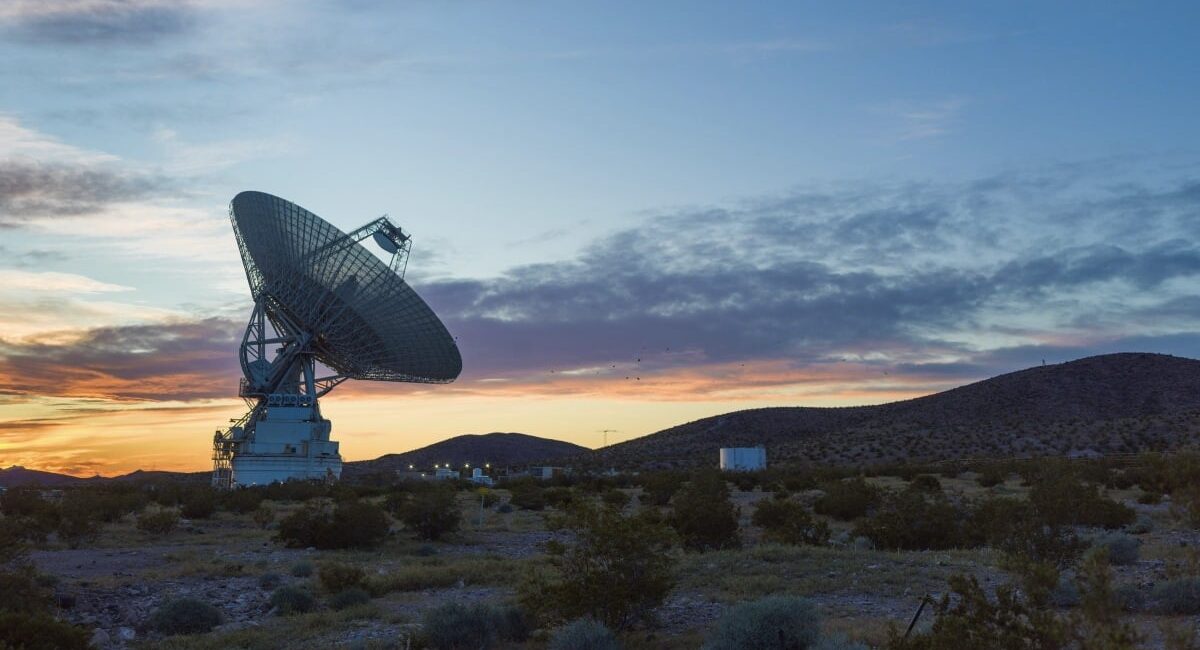The label “space rock” feels like an understatement for what NASA just observed.
A rock is something you throw at a window to get someone’s attention. A rock holds down your picnic blanket to keep it from flapping in the wind. This rock, at 660 feet wide, spans two American football fields — and then some.
The asteroid, called 1997 QK1, made its nearest approach in space on Aug. 20 at 1.9 million miles away from Earth. The ancient rubble hasn’t come this close to the planet in more than 350 years.
The flyby gave astronomers a chance to inspect its size, rotation, surface, and shape. Before taking these images with the Deep Space Network’s Goldstone Solar System Radar, shown below, scientists knew hardly anything about it. Now it’s less of a stranger.
“The asteroid is classified as potentially hazardous,” according to NASA, “but it does not pose a hazard to Earth for the foreseeable future.”

The flyby of asteroid 1997 QK1 gave astronomers a chance to inspect its size, rotation, surface, and shape with radar images.
Credit: NASA / JPL-Caltech
Millions of asteroids orbit the sun, remnants of the solar system’s birth 4.6 billion years ago. Most are harmless, tucked away in the belt between Mars and Jupiter. But sometimes, gravity shoves a rock closer to Earth.
Mashable Light Speed
None are currently on track to hit us. Still, astronomers are tracking close to 40,000 large space rocks and think perhaps thousands more are out there. Telescopes spot hundreds of new ones every year.
“An asteroid impact is an extremely rare event,” said Lindley Johnson, NASA’s former planetary defense officer, in 2022. “Maybe once a century is there an asteroid that we would really worry about and want to deflect.”
Despite the slim chance of one headed for Earth, these rare smacks can be disastrous. NASA estimates that a 100 to 170-foot-wide asteroid could level a small city. In 2013, a 60-foot meteor exploded over Chelyabinsk, Russia, damaging buildings and injuring 1,600 people.
To guard against that possibility, countries are building warning systems and deflection plans. NASA proved such efforts could work in 2022, when its $330 million DART mission slammed into a harmless asteroid and nudged it off course. The target practice was largely deemed a success, though follow-up studies have recently shown the results are far more complicated than anyone thought.
The clear radar images of 1997 QK1 give scientists valuable insight into how such asteroids behave — useful information for developing planetary defense strategies, regardless of whether the giant rock is dangerous.
Through a series of 28 pictures, astronomers learned the asteroid makes a full spin every five hours and is a “contact binary” with a long peanut shape, attributed to its having two rounded lobes. One of those bulbous ends is twice the size of the other, and both ends have valleys “tens of meters deep.”
Some 15 percent of near-Earth asteroids of a similar scale or larger have this shape. That’s because many of these objects aren’t single solid rocks but loose piles of rubble that drift together. Over time, those piles can connect.
The asteroid will get closer to Earth in 2039, according to NASA. At that time, it’ll come within 1.5 million miles — about six times farther than the moon.



No Comment! Be the first one.